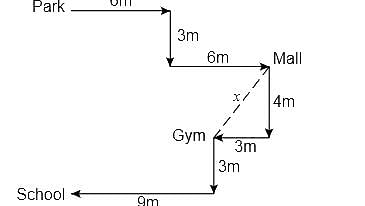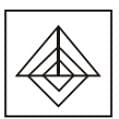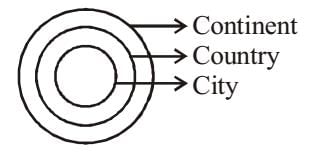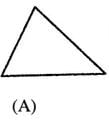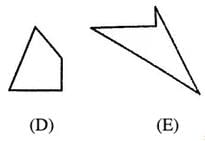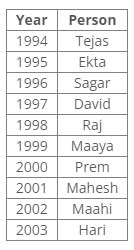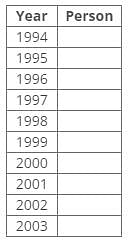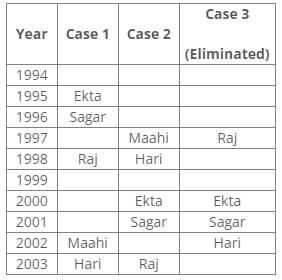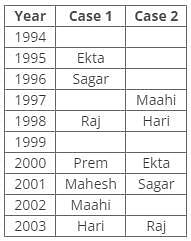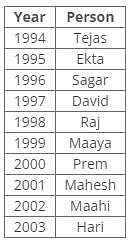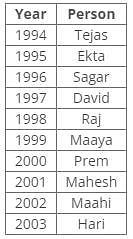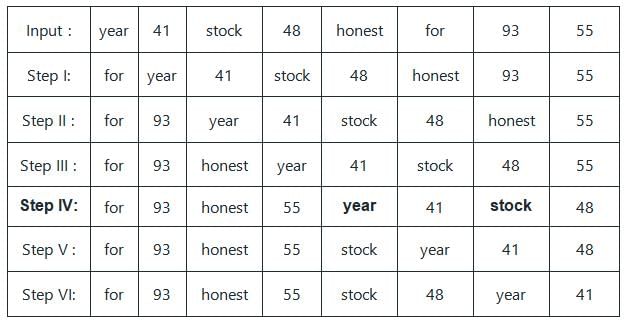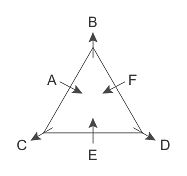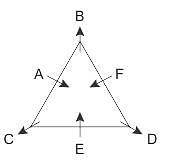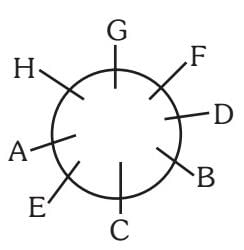JK Police Constable Mock Test - 3 - JK Police Constable MCQ
30 Questions MCQ Test JK Police Constable Mock Test Series 2024 - JK Police Constable Mock Test - 3
Direction : Two statements I and II are given. These statement may be either independent causes or may be effects of independent causes or a common cause. One of these statements may be the effect of the other statements. Read both the statements and decide which of the following answer choice correctly depicts the relationship between these two statements.
Mark answer :
I. Ram's father was ill.
II. Ram brought medicine after consulting the doctor.
Mark answer :
II. Ram brought medicine after consulting the doctor.
Directions: Study the following instructions carefully and then answer the questions that follow.
In making decisions about important questions it is desirable that a candidate is able to distinguish between 'strong' and 'weak' arguments so far as they relate to the questions.
'Weak' arguments may not be directly related to the questions and may be of minor importance or may be related to the trivial aspect of the question.
Each question below is followed by two arguments I and II. You have to decide which of the arguments is a 'strong' argument and which is a 'weak' argument.
Statement: Should all the unauthorized structures in the city be demolished?
Arguments:
(I) No. Where will the people residing in such houses live?
(II) Yes. This will give a clear message to general public and they will refrain from constructing unauthorized buildings.
| 1 Crore+ students have signed up on EduRev. Have you? Download the App |
Direction: In each question below is given a statement followed by two assumptions numbered I and II. You have to consider the statement and the following assumptions and decide which of the given assumptions is implicit in the statement.
Statement:
So long as there is a caste-based society in our country, there is no harm in having caste-based organisations to look after the welfare of their castes.
Assumptions:
I. There is nothing wrong in having religious organisations to spread their ideals.
II. Political parties cannot look after the welfare of different castes like caste-based organisations can.
So long as there is a caste-based society in our country, there is no harm in having caste-based organisations to look after the welfare of their castes.
Assumptions:
I. There is nothing wrong in having religious organisations to spread their ideals.
II. Political parties cannot look after the welfare of different castes like caste-based organisations can.
Statement: The price of oil has increased by 10% in the past month.
Inference:
I. The demand for oil has increased in the past month.
II. The supply of oil has decreased in the past month.
III. The price of other commodities has also increased in the past month.
Direction: Study the following information and answer the given questions carefully.
Ishu was standing in a park. She walked 6m towards the east and turned right and walked 3m. Then she turned left and walked 6m to reach the mall. Now, she turned right and walked 4m and again turned right and walked 3m to reach the gym. After some time, she turned left and walked 3m and turned right and walked 9m to reach his school.
Q. How far and in which direction is the school with respect to the park?
Direction: If a Paper (Transparent Sheet) is folded in a manner and a design or pattern is drawn. When unfolded this paper appears as given below in the answer figure. Choose the correct answer figure given below.
Which of the answer figures can be formed using the question figure:
Question Figure
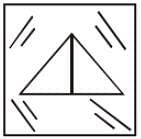
Answer figure
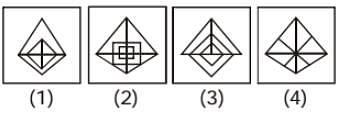
Select the venn diagram that correctly shows the relationship.
Continent , City and Country
From the given answer figures, select the one in which the question figure is hidden/embedded.

In this questions, a number series is given with one term missing. Choose the correct alternative that will continue the same pattern and fill in the black spaces.
Q. 2, 5, 9, (___), 20, 27
From her house, Avantika went 15 km to the North, then, she turned West and covered 10 km. then, she turned South and covered 5 km. finally, turning to East, she covered 10 km. in which direction is she from her house?
Directions: In the following questions a word is followed by four other words, one of which cannot be formed by using the letters of the given word. Find this word.
PROSPECTIVE
Which of the following will be the changed form of the word OBLIQUE when the word is written again by substituting each vowel by the 2nd letter following it in the English alphabet and each consonant is substituted by the 3rd letter following it in the English alphabet?
In the following question, five figures are given. Out of them, find the three figures that can be joined to form an equilateral triangle.

Which answer figure will complete the pattern in the question figure?
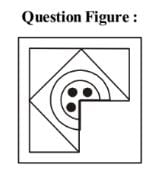

Find the number of triangle in the given figure.

Some boys are sitting in a line. Mahendra is on 17th place from left and Surendra is on 18th place from right. There are 8 boys in between them. How many boys are there in the line?
Direction: Study the following information and answer the given questions carefully.
Ten people were born in ten different years from 1994 to 2003. Two people were born between Ekta and Raj. Maahi was born immediately before Hari. Four people were born between Hari and Raj. Sagar was born immediately after Ekta. Mahesh was born after Prem. David was born after Tejas but before Maya. Ekta was born in a year which is a multiple of 5. Three people were born between Prem and Sagar.
Q. Find the odd one out.
Direction: Study the following information carefully and answer the given question:
The following is an illustration of input and its rearrangement.
(Numbers wherever they appear are two-digit numbers)
Input: Sold data 19 24 from 92 then 40
Step I : Data sold 19 24 from 92 then 40
Step II : Data 92 sold 19 24 from then 40
Step III : Data 92 from sold 19 24 then 40
Step IV : Data 92 from 40 sold 19 24 then
Step V : Data 92 from 40 sold 24 19 then
Step VI : Data 92 from 40 sold 24 then 19
And Step VI is the last step of the rearrangement of the above input.
Q. As per the rules followed in the above steps, which word / number is second to the right of fourth from the right end in the fourth step of the input given below?
Input : Year 41 stock 48 honest for 93 55
Directions: Each of the following consists of a question and two statements numbered I and II given below it. You have to decide whether the data provided in the statements are sufficient to answer the question.
What is Rahul's rank in the class?
Statement I: Rahul's rank is 28 less than Monika's rank.
Statement II: Aditi's rank is 42 more than Rahul's rank. Monika's rank is 12 less than Aditi's rank.
Direction: Study the following information carefully and answer the given questions besides.
Six person A, B, C, D, E and F sit around a triangular table. One person sits at each corner of the table facing away from the centre while one person sits at the middle of each edge facing toward the centre.
Three persons sit between C and D, who is not facing the centre. F sits third to the left of C. A is not an immediate neighbour of D. A sits second to the left of E.
Q. If we interchange the positions of B and D, then who among the following will be sitting 3rd to the left of D after rearrangement?
If the expression, ‘B > A; G < E > T; T ≥ B’ are definitely true then which of the following combinations will be possibly false?
Given below are two statements:
Statement I: Policies are guides to action. rather than to thinking.
Statement II: Policies define an area within which a decision is to be made.
In the light of the above statements, choose the most appropriate answer from the options given below:
Direction: Study the following information and answer the questions given below:
A, B, C, D, E, F, G and H are sitting along a circle facing at the center. F is third to the right of C and second to the left of H. D is not an immediate neighbor of C or H. E is on the immediate right of A, who is second to the right of G.
Q. Which of the following is the correct position of B with respect to H?
I. Second to the right
II. Fourth to the right
III. Fourth to the left
IV. Second to the left
If '+' mean '-', '-' means 'x', 'x' means '÷' and '÷' means '+', then value of 16 x 2 ÷ 25 + 7 - 4 is
Find the odd number / letters / word from the given alternative.
Direction: In each question below is given a statement followed by two courses of action numbered I and II. You have to assume everything in the statement to be true and on the basis of the information given in the statement, decide which of the suggested courses of action logically follow(s) for pursuing.
Statement: The alert villagers caught a group of dreaded dacoits armed with murderous weapons.
Courses of action:
I. The villagers should be provided sophisticated weapons.
II. The villagers should be rewarded for their courage and unity.
Direction : Two statements I and II are given. These statement may be either independent causes or may be effects of independent causes or a common cause. One of these statements may be the effect of the other statements. Read both the statements and decide which of the following answer choice correctly depicts the relationship between these two statements.
Mark answer :
I. A huge truck overturned on the middle of the road last night.
II. The police had cordoned off the entire area in the locality last morning for half of the day.
Direction: Study the following instructions carefully and then answer the questions that follow.
In making decisions about important questions it is desirable that a candidate is able to distinguish between 'strong' and 'weak' arguments so far as they relate to the questions.
'Weak' arguments may not be directly related to the questions and may be of minor importance or may be related to the trivial aspect of the question.
Each question below is followed by two arguments I and II. You have to decide which of the arguments is a 'strong' argument and which is a 'weak' argument.
Statement: Should person convicted of criminal offences in the past be allowed to contest elections in India?
Arguments:
(I) No, such persons cannot serve the cause of the people and country.
(II) Yes, it is democracy - let people decide whom to vote.
Direction: In each question below is given a statement followed by two assumptions numbered I and II. You have to consider the statement and the following assumptions and decide which of the given assumptions is implicit in the statement.
Statement:
"I have not received telephone bills for nine months inspite of several complaints" --------A telephone customer's letter to the editor of a daily.
Assumptions:
I. Every customer has a right to get bills regularly from the telephone company.
II. The customer's complaints point to defect in the services which is expected to be corrected.


